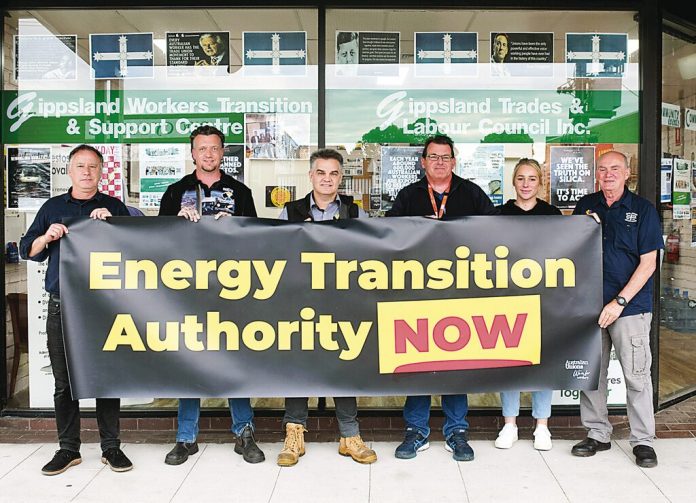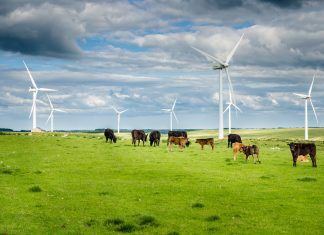ZAIDA GLIBANOVIC
By ZAIDA GLIBANOVIC
LATROBE Valley workers have backed the need for a federal Energy Transition Authority.
Meeting at the Gippsland Trades and Labour Council (GTLC) building last Thursday in Morwell, local workers and their unions urged the federal government to support a National Energy Transition Authority (NETA).
The federal statutory authority would oversee the orderly closure of power stations, industry diversification in regions like the Latrobe Valley, and support the transition of employees.
At the meeting, the GTLC confirmed that “the GTLC unanimously supports the need for a National Energy Transition Authority and has been actively working with the Victorian state government via the Latrobe Valley Authority around transition but understand their limitations when it comes to issues at a federal level”.
GTLC secretary, Steve Dodd, said the Latrobe Valley was a real example of a community dealing with power plant closures without backup plans.
“We are still feeling the effects of Hazelwood’s closure in 2017, with just five months’ notice,” Mr Dodd said.
“Coal power and coal mining have been the economic lifeblood of this region. We have powered the state and nation for a century but with the timeline for closure for our remaining power stations accelerating – we need federal co-ordination and support.”
With the Yallourn power station to close in 2028 and the early closure of Loy Yang A in 2035, the unions’ call for a transition authority grows louder.
The authority envisioned by the unions would have three main functions:
Create programs to assist affected workers, such as reassignment to similar facilities or retraining and recruiting into sustainable sectors;
Assist, organise, and partially finance initiatives to establish alternative businesses in coal-dependent regions such as the Latrobe Valley, and;
Make certain that education and training programs, as well as infrastructure, are in place to encourage industrial diversification in these areas.
Last month, a delegation of all different unions went to Canberra to discuss the need for a NETA.
In a speech at the National Press Club, Australian Council of Trade Unions (ACTU) president Michele O’Neil said a national energy transition authority was the key component to the national climate and energy policy, and it must be included in the May budget.
“An independent, statutory national energy transition authority will ensure the shift to renewable energy happens with workers, not to workers, and delivers good jobs and economic opportunity,” she said.
“We do not have to choose between climate action and jobs – it’s our responsibility to act on both.”
Mark Richards, Victorian secretary for the mining and energy union and assistant secretary for GTLC, is pushing for a national energy transition authority for economic security in the Valley.
“What we’re looking for is a pathway for the future to make sure communities like Latrobe Valley and the Hunter Valley aren’t left behind and become ghost towns,” he said.
Mr Richards used Germany and Spain’s transition as an example.
“We’ve seen in Germany and in Spain they’ve had a government-run transition authority,” he said. In Germany, they had reduced 500,000 coalminers down to 10,000 without a single forced redundancy.
“They’ve created pathways for the community to transition jobs. They’ve done that by having a tripartite method which is government, with business and with unions.”
An independent tripartite authority would aim to support workers through comprehensive packages that include pooled redundancy and employment schemes, education, training, income replacement and retirement plans.
“One thing we’ve talked about on a Victorian level with the likes of Lily D’Ambrosio, is that if you’re going to create a Star of the South project down by the coast, that those jobs aren’t going to help the people in the Latrobe Valley. What we need is something like building the wind turbines here in the Latrobe Valley,” Mr Richards added.
Mr Richards explained the need for a federal body to take charge of the energy transition, as each state has different interests.
“Unfortunately, you’re dealing with Queensland, New South Wales, Victoria and South Australia all on the one grid, and each government in each state has a different idea of what it wants to do, so that’s why we need a national energy transition authority to take that whole group of states and plan together,” he said.
An Australian Energy Council policy adviser said the national transition body had been criticised on the basis that state energy plans and pathways were too advanced to be reconfigured into a federal program.
However, the council said this was not the first time a national authority had been considered. Multiple variations had been presented in the past by unions before, and Labor supported a similar effort before the 2022 federal election.
The federal government recently established a net zero economy task force to advise how to help regional communities during the low-carbon transition. The Greens have also proposed an amped-up version of the authority to include other advising and law-reform tasks.
Funding for the national energy transition authority is in the hands of Treasurer Jim Chalmers’ federal Budget next month.











